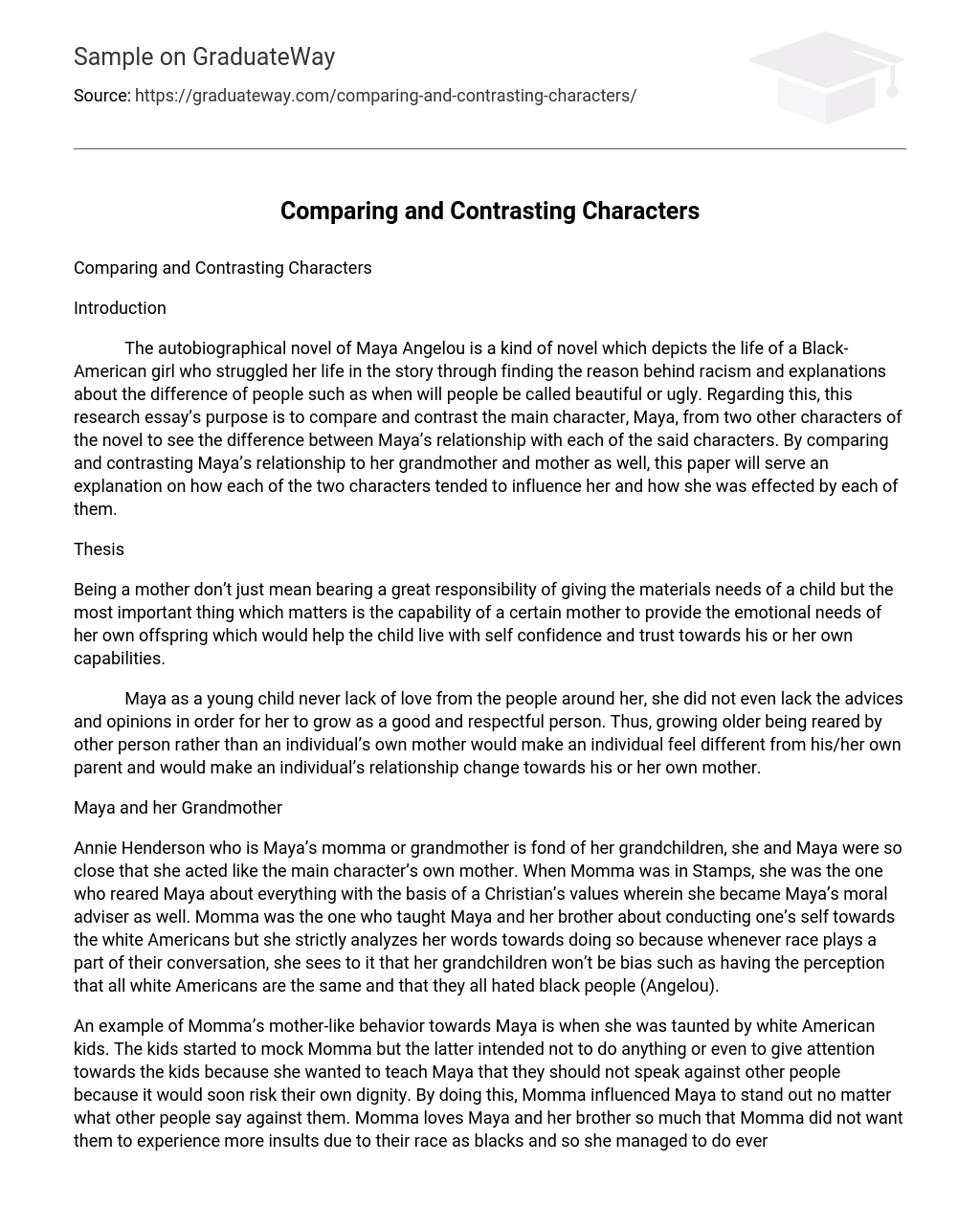Introduction
The autobiographical novel by Maya Angelou depicts the life of a Black-American girl who struggles with racism and the differences between people, such as what makes someone beautiful or ugly. The purpose of this research essay is to compare and contrast Maya’s relationship with two other characters in the novel. By examining her relationships with her grandmother and mother, we can see how each character influenced her and how she was affected by them.
Thesis
Being a mother doesn’t just mean bearing the great responsibility of providing for a child’s material needs. The most important thing is a mother’s ability to provide for her child’s emotional needs, which helps the child live with self-confidence and trust in their own capabilities.
Maya never lacked love as a young child from the people around her. She also received advice and opinions to help her grow into a good and respectful person. However, being raised by someone other than one’s own mother can make an individual feel different from their parent and can change their relationship with their mother as they grow older.
Maya and her grandmother
Annie Henderson, who is Maya’s grandmother, is fond of her grandchildren. She and Maya were so close that Annie acted like Maya’s own mother. When Annie was in Stamps, she raised Maya with Christian values and became her moral adviser. Annie taught Maya and her brother how to conduct themselves around white Americans but was careful not to promote bias or the perception that all white Americans are the same or hate black people (Angelou).
An example of Momma’s motherly behavior towards Maya was when she was taunted by white American kids. The kids mocked Momma, but she chose not to react or give them attention. Instead, she wanted to teach Maya that speaking against others would risk their own dignity. Through this action, Momma influenced Maya to stand out no matter what others said about them. She loved Maya and her brother so much that she did not want them to experience further insults due to their race as black people. Therefore, she did everything in her power to protect them from encountering racist individuals.
Another example of Momma’s love for Maya can be seen in the incident where she took both children with her to California. Although Mrs. Henderson had never left her birthplace before, for the sake of her grandchildren’s well-being, she moved with them across the country (Angelou).
Maya and her mother
Vivian Baxter was never emotionally affectionate towards her daughter Maya or her son Bailey. Her relationship with Maya was purely materialistic, only acting as a mother when providing for Maya’s needs. Unlike Momma, Vivian never gave Maya advice to understand life. Vivian’s actions made it clear that she didn’t care about Maya’s well-being and only cared about providing for her materialistic needs. This was evident when she left Maya in the house with her live-in boyfriend without a second thought, leading to a disastrous situation where the child was raped by Vivian’s partner.
Conclusion.
Maya’s relationship with her grandmother, Momma, is as strong as a child’s relationship with their own mother. This is because Maya’s mother is incapable of showing her child the affection and care that she needs the most. As Maya grew older, Momma guided and raised her in ways that should have come from her own mother. However, since Maya’s mother only cared about materialistic responsibilities, she was drawn closer to her grandmother.
On the contrary, Maya’s relationship with her own mother is considered a plainly materialistic one. Her mother only provides the material things she needs, but not emotional support. As the story deepens, Vivian learns how to care for her daughter after a rape incident occurred between Maya and Vivian’s live-in boyfriend. This event led Vivian to realize that her child needs personal advice and guidance from her. In the end, Maya somehow admires her mother once again for giving her emotional advice and teaching her to trust one’s maternal instinct.
Works Cited
Angelou, Maya. I Know Why the Caged Bird Sings.” Random House, 1969.





